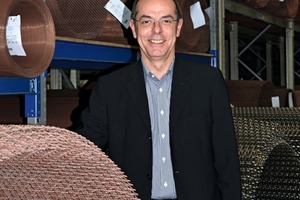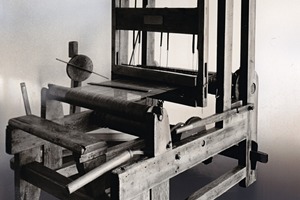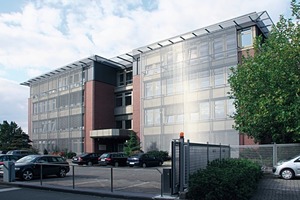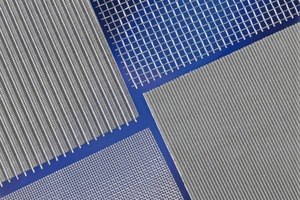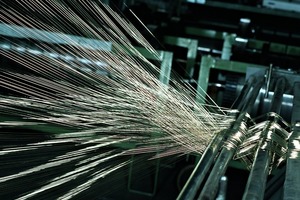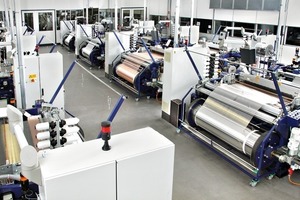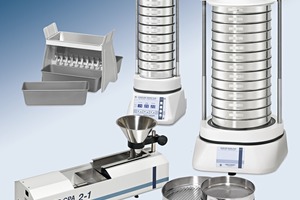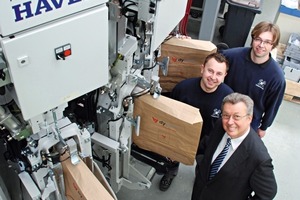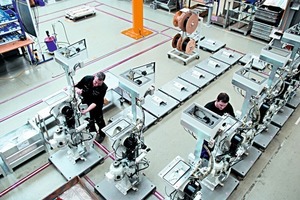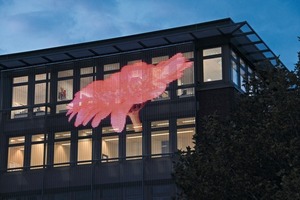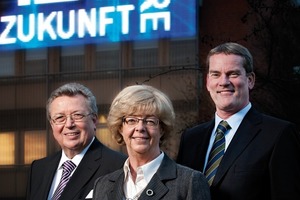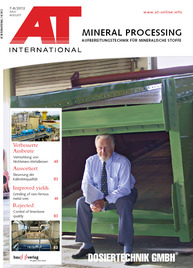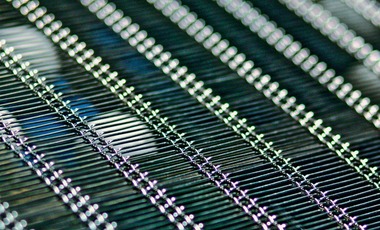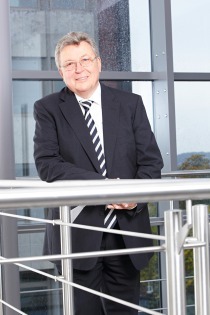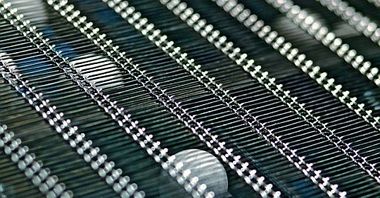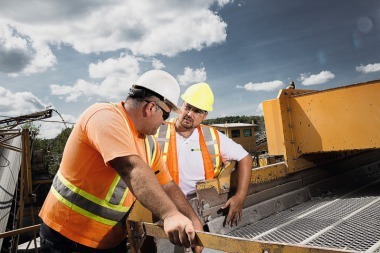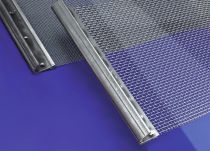125 years – a family-run company in fourth generation
According to the memoires of Carl Haver junior (1884 - 1976), which the son of the founder of the company, Carl Haver, wrote in the 1960s, “If someone had told my father in the early years of his entrepreneurial activity that his company would at some stage have branches abroad, he would probably have smiled in disbelief.” Together with his cousin, Eduard Boecker, he established the firm of HAVER & BOECKER on the 25th of August 1887 in Hohenlimburg, the German centre for wire drawing and wire weaving, at that time. Eduard Boecker left the company in 1891. The early years were difficult due to the working conditions in Hohenlimburg and the competition from Thuringia. This changed due to the move to Oelde in Westphalia, where the head office of the company has been since 1897. By 1890, the workforce had doubled from 12 to 24 employees. Apart from wire weaving, the engineering works established in 1925 had developed into the second mainstay of the company.
The importance of education and further training was recognized very early on. Records show that training has been taking place since 1905. In 1940, an own trainee workshop was set up, and is currently equipped so that the industrial-technical trainees are able to develop and train their skills there. In a regional comparison, over 100 young people annually pass their technical or commercial vocational training at HAVER & BOECKER at an exceptionally high level and complete it with above average good final exam results. In 2007, the HAVER Academy was set up as a further education platform for employees and customers. Working together with Siemens vocational training and the South Westphalia University of Applied Sciences, it is also possible to train and study for a Bachelor of Arts or Engineering.
During the 125 years, the 12-man company in Hohenlimburg has developed into a diversified, internationally operating company. With its 50 subsidiaries worldwide, the company as a whole achieved a turnover in 2011 of more than 370 million €. An active corporate culture and the social responsibility of the traditional family-owned company towards the staff, customers and society, which far exceeds the statutory and contractual demands, contributes towards the motivation and long-term loyalty of the people who work for and with HAVER & BOECKER. Furthermore, the family has been active in the management of HAVER & BOECKER since the company was established, the responsibility now being borne by the fourth generation. The legal form of the company is still oHG (General Partnership).
On the occasion of this special anniversary, the editors of AT INTERNATIONAL and ZKG INTERNATIONAL met with Helmut Schuhmacher, Manager of the Industrial Screen Department in the Wire Weaving Division and Dr. Reinhold Festge, Managing Partner of HAVER & BOECKER.
Helmut Schumacher: Whether in science and research, industry or architecture – on every sector where wire cloth from HAVER & BOECKER is used, customers profit from our 125 years of experience in the manufacturing of wire cloths for an extremely diverse range of applications. Throughout the long history of our company the configuration of our product range and of the production processes was repeatedly adapted purposefully and in good time to the needs and requirements of the respective markets. This also resulted in new markets being accessed. The first important step was the mechanization of our wire weaving machines at the beginning of the 20th century and the extension of our range of products: fine wire cloth, 250 mesh with 10 000 meshes per cm². We also added loop tie wire for closing bags used in the cement industry.
Beside the company’s first steps towards internationalization, the 1920s and 1930s saw the development and production of HAVER metal gauze for precision screen printing and the first NIAGARA vibrating screening machines. Further significant developments up to 1960 were the manufacturing of the world’s finest wire cloths: 540 mesh with 45 000 meshes per cm2 and MINIMESH twilled weave filters for the aviation and aerospace industries. One memorable event was the supply of DOKAWELL stainless steel woven wire mesh for the large aviary in the Munich Hellabrunn Zoo. In the last 30 years the company has successfully expanded its market position. Moreover, one new market has been added – architectural wire mesh. For this sector we also developed IMAGIC WEAVE®, a transparent media façade. We transform our wire cloth also to filters and fabricated parts, used amongst others for the automotive sector.
Helmut Schumacher: In the course of our 125 years the initially very simple wire cloth has been strongly diversified and adapted to suit the needs of numerous applications. Today, our wire weaving division manufactures more than 3600 types of wire cloth.
One significant advance was the use of spring steel. This is a high strength type of steel (1260 - 1970 MPa) and the special production process makes it outstandingly resistant to wear and vibration.
For screening materials with problematic properties, harp screens were developed. Their freely oscillating individual wires prevent sticking and blinding. The use of PU coatings also brought a considerable improvement in wear resistance, and here too the springing back of the wires also results in self-cleaning and prevents caking. Another example for the diversification was the use of flat wire, which almost completely eliminated blinding of the meshes.
The main factors behind the growth of our company have been constant refinement of our products and the permanent search for new wire mesh applications – pre-eminent examples are architectural wire mesh and the applications in the automobile industry.
Helmut Schumacher: In co-operation with Artech Systems AG of Switzerland, we have optimized ultrasonic screening systems for screening bulk materials up to a separating cut of 500 µm (and even finer). For this application, wire mesh is mounted on screen frames equipped with a sound conductor system. Ultrasonic sound is applied to the wire mesh via this sound conductor system so that the mesh is directly excited and no longer exclusively resonates to the low frequency imparted by the screening machine itself. The result is a significantly improved screening performance: higher throughput rates, finer separating cuts and reduced blinding of the screen sections.
On the field of rectangular mesh screens, we are about to start manufacturing the wire cloth well-known in the USA and Canada under the trade name of Ton-Cap here in Germany and will market it for the very first time in Europe. Ton-Cap is the abbreviation for Tonnage-Capacity – i.e. a higher tonnage/service life of a screen section. Unlike the screens with rectangular meshes that have been marketed up to now in Europe, Ton-Cap specifications have a larger length-to-width ratio, which allows the use of thicker-diameter wire. With a practically identical open surface area of the screen, the weight per unit area is thus significantly higher, resulting in a corresponding increase in the wear-influenced service life of the screen section. HAVER & BOECKER will initially offer Ton-Cap rectangular-mesh wire cloth in the mesh size range of 0.18 mm to 0.80 mm.
HAVER & BOECKER is a well-known supplier of highly wear-resistant spring steel wire cloths, which are available in mesh widths of up to 0.224 mm. In the case of finer separating cuts the screen operator has to resort to standard stainless steel wire cloths with a lower strength, which reduces the wear-influenced service life of the screen. Thanks to the introduction of woven screen sections made of duplex materials, even finer separating cuts can now be achieved with a wear-resistant material. Duplex can also be magnetized, so that this wire cloth is also an excellent choice for the foodstuffs industry.
AT INTERNATIONAL: To what extent is H&B active on the field of recycling?
Helmut Schumacher: HAVER & BOECKER supplies woven wire screen sections for numerous recycling applications. Beginning with large-aperture wire mesh for the recycling of gravel and rubble, which are made of highly wear-resistant spring steel wire or noncorrosive stainless steel, right up to fine wire cloths used, for instance, for the preparation of plastic granulates.
For screening applications requiring a finer separating cut, pre-tensioned screen sections are often used. For this purpose, HAVER & BOECKER bonds pre-tensioned wire cloth onto round or rectangular screen frames. Large-aperture wire mesh is tensioned, for example, by means of hook strips or supplied in pre-cut form for mounting in drum screens on mobile building rubble screening systems.
Reinhold Festge: Forward-looking decisions and flexibility are – and have always been – the basis for our actions. A review of HAVER & BOECKER’s history will show that only the founder himself managed the company for less than twenty-five years. The last three generations have each had up to fifty years to guide company fortunes, and this fact has resulted in sustained and stable development. Our company has always possessed the ability to identify and respond to industry trends, this contributed to its success even in the early days. There is scarcely any comparison between the wire-weaving division then and now, however. Today, it is an ultramodern company, with a broad and highly technical range of products, extending from automotive industry applications up to space technology. And we aim, in the future, too, to remain a premium, rather than a mass, producer.
Reinhold Festge: We have introduced our pelletizing discs onto the market and they are selling well. We are now working intensively on FrictionClean system for cleaning severely contaminated, clayey raw materials. Our aim is to clean away the sticky components. We already have the Hydro-Clean® high pressure washing system. The new product will add a frictional component for even more effective cleaning. The first FrictionClean system is currently being built on a laboratory scale in Freiberg and will be demonstrated during our “Haver Technology Days”.
Reinhold Festge: An important field is the processing of low-grade raw materials. And our wire weaving division is working on the development of new types of wire cloth and the combination of wire and plastic cloths. The wire weaving division has just taken over MajorWire of Canada, a company that has self-cleaning and flexible wire cloth in its portfolio.
Reinhold Festge: We are still working on oil sand project in Canada and iron ore projects in Mexico and Chile.
Reinhold Festge: On the processing technology sector we will also focus our activities on intelligent, i.e. self-controlling processes. That will be the task for the future. To give you just one example – if the pelletizing disc is fed with material from a different mine that has different properties, the system must be able to automatically adapt itself to the new conditions.
Reinhold Festge: We intend to accelerate our new developments, in the field of preparation technology products, for example. We are currently entering totally new areas, in the form of pelletising and cleaning of contaminated feed materials. We received our first research commission from Siemens for further development of pelletising technology not long ago. We will also soon have new solutions for specific markets, and new products, in packaging technology. We are intensifying our commitment in the foodstuffs industry, but we will also continue expanding our existing market segments and shares. In our experience, customers who buy HAVER & BOECKER want H&B, so it’s no use trying to sell cheaper, lower-quality products which don’t meet customers’ requirements as well as the premium product.

